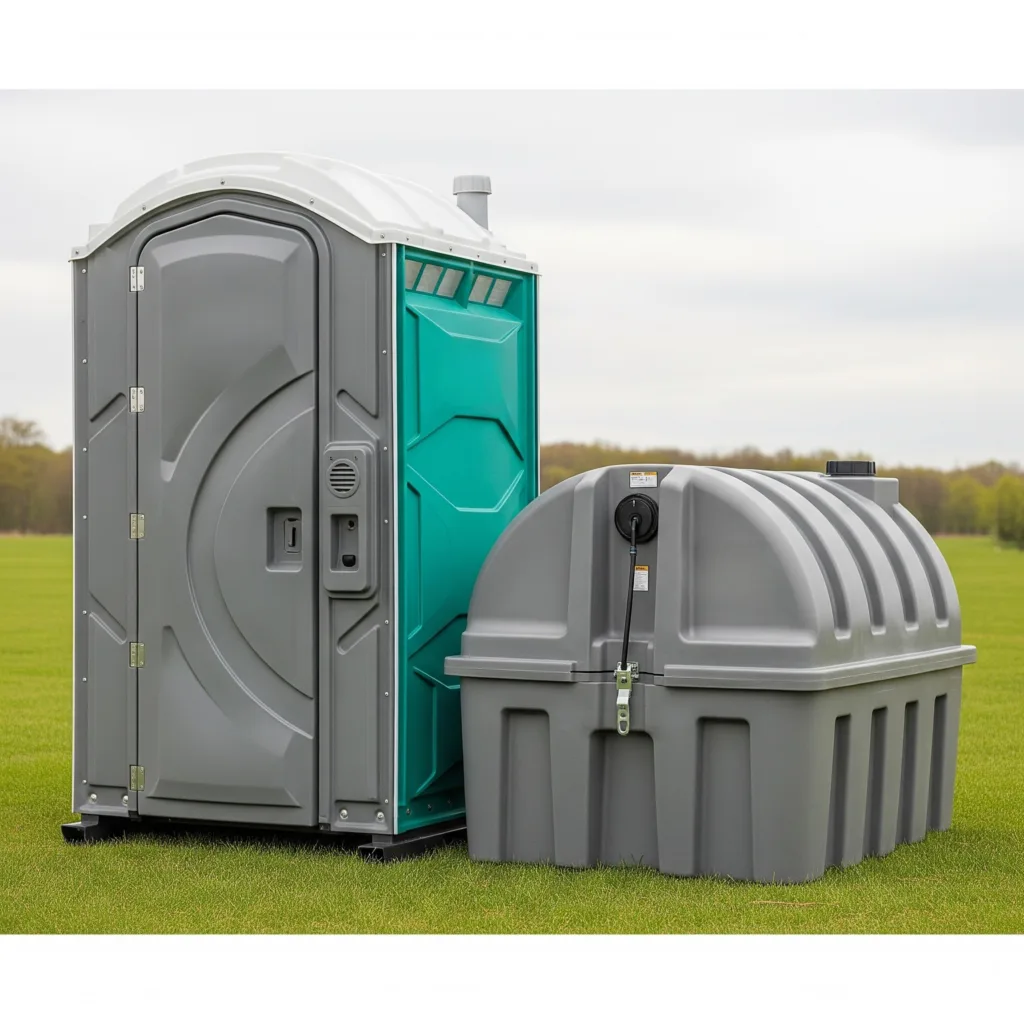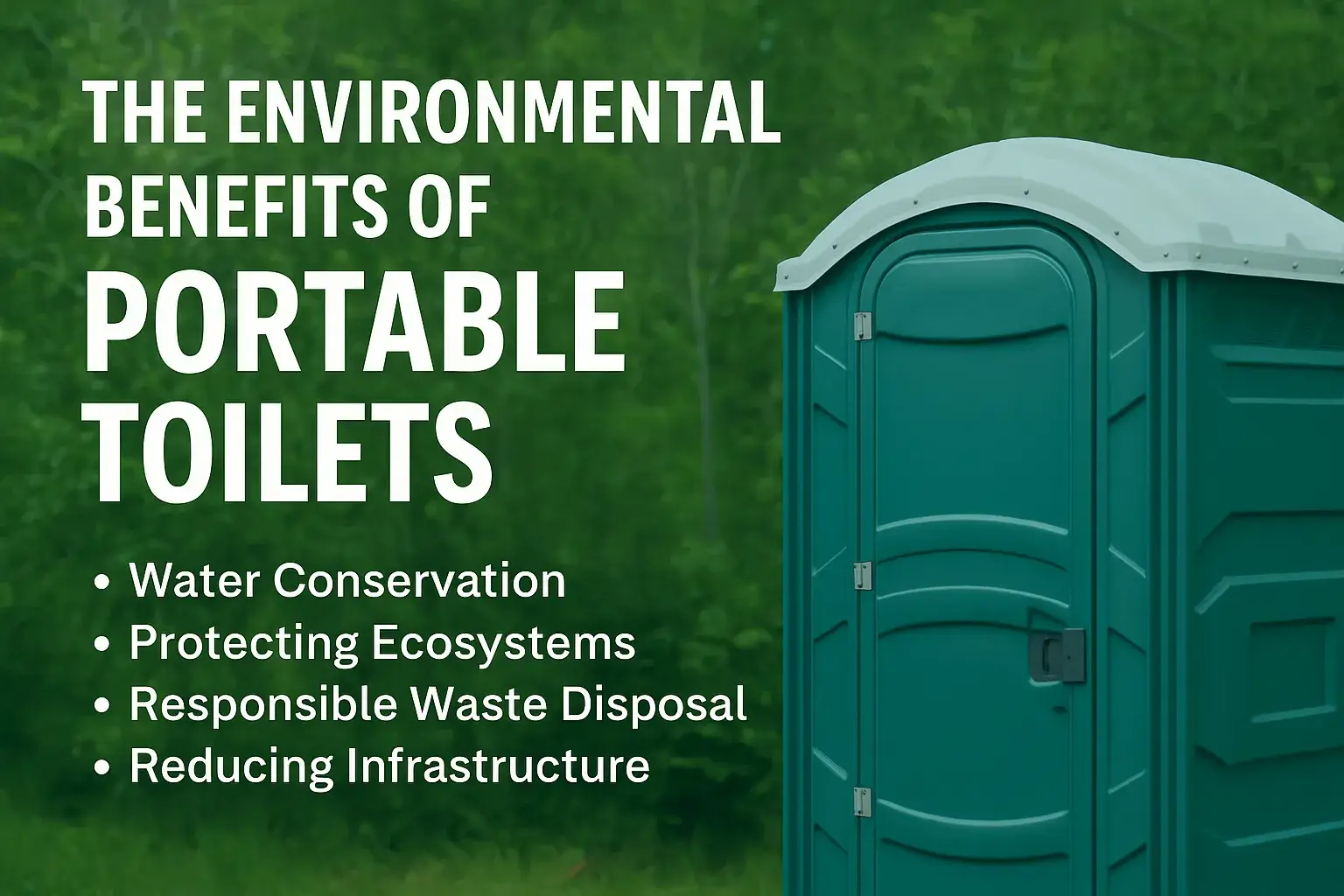If you’re managing a construction site, hosting a long-duration outdoor event, or setting up a temporary facility in the field, proper wastewater management is non-negotiable. When a traditional sewer connection isn’t available, holding tanks offer a clean, compliant, and scalable solution.
In this post, we’ll explain what holding tanks are, when to use them, and how professional servicing keeps your site safe and sanitary.
What Is a Holding Tank?
A holding tank is a sealed, non-vented container designed to temporarily store wastewater — including sewage and graywater — until it can be pumped out and properly disposed of.
Unlike septic systems, holding tanks don’t process or break down waste. They’re strictly for storage, making them ideal for short-term or mobile applications.
When Do You Need a Holding Tank?
Holding tanks are used in any situation where there’s no direct connection to a sewer or septic system, and consistent access to sanitation is required.
Common Use Cases:
🏗️ Construction Sites Without Sewer Access
- Remote or undeveloped job sites
- New construction where utilities aren’t hooked up yet
- Projects with high worker volume and no restrooms nearby
🎪 Long-Term Outdoor Events
- Multi-day festivals, fairs, or weddings
- Agricultural events and RV gatherings
- Events held in parks or on private land
🚑 Emergency Field Operations
- Disaster response zones
- Military field deployments
- Utility and infrastructure repair staging areas
Holding tanks are often paired with portable restrooms, trailers, or temporary handwashing stations to provide a full sanitation solution.
How Does Holding Tank Servicing Work?
Professional servicing is key to safe and compliant holding tank use. Here’s what the process includes:
1. Scheduled Pump-Outs
A vacuum truck arrives on a regular schedule (daily, weekly, or as-needed) to remove wastewater and transport it to an approved treatment facility.
2. Inspection & Maintenance
Technicians inspect the tank for leaks, blockages, and proper seal function. Overflow prevention is a critical part of this check.
3. Sanitation & Additives
Odor-control products or enzymatic treatments may be added to manage buildup and improve the user experience, especially in warm weather.
4. Reporting & Compliance
For commercial and municipal projects, providers often supply documentation to verify that your site is being maintained according to local and federal guidelines.
What Size Holding Tank Do I Need?
Holding tanks come in a variety of sizes, typically ranging from 250 to 500 gallons or more. The right size depends on:
- Number of users
- Frequency of use
- Duration of service
- Pump-out frequency
Example: A 300-gallon tank can support around 10 people working full-time for a week if paired with standard portable toilets.
Why Rent from NextSite Rentals?
At NextSite Rentals, we provide clean, durable holding tanks and full-service support for:
- Construction sites
- Outdoor events
- Emergency or utility deployments
- Temporary facilities and trailers
You’ll get:
✔️ Reliable delivery and setup
✔️ Scheduled pump-outs and maintenance
✔️ Expert support and compliance guidance
✔️ Optional pairing with portable toilets or trailers
Get a Quote for Holding Tank Rentals
Don’t let lack of sewer access slow your project or event. We make it easy to plan and manage safe, code-compliant sanitation — wherever you are.
📞 Call us at 833-670-4195



